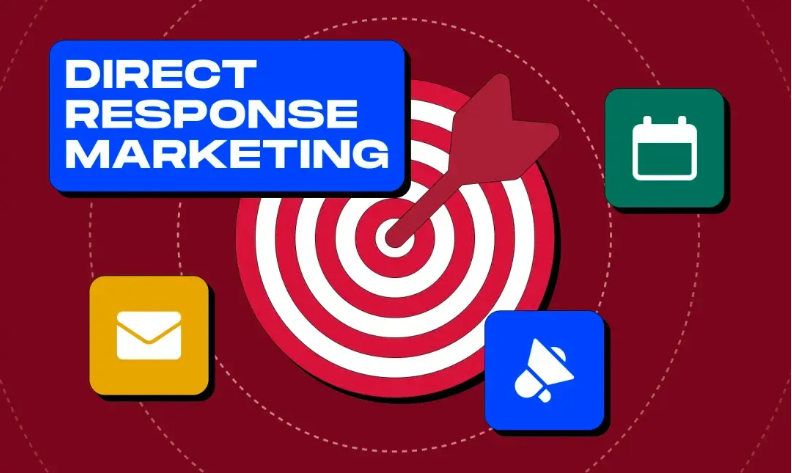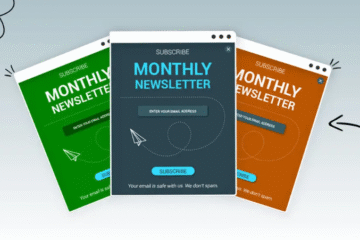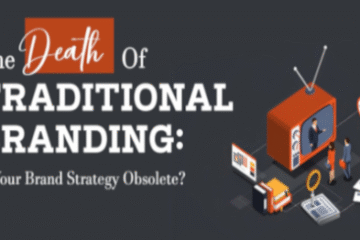Let’s clear up a profit-killing confusion: direct response marketing and direct response advertising are not the same thing.
They’re related. They feed each other. But when you treat them like twins, you waste budget, burn leads, and wonder why “DR” doesn’t work for you.
Think of it like this:
Direct response marketing is the system that engineers response across your entire buyer journey—offer, list, message, proof, pages, follow-up, upsells, the works.
Direct response advertising is the media you buy to trigger that system—your ad creative and placements designed to get a measurable action now.
Marketing is the engine. Advertising is the accelerator. Step on the gas with a broken engine and you don’t go far.
What Direct Response Marketing Really Does
Direct response marketing answers the money questions before a single ad runs:
Who exactly are we talking to? (Segments, pains, awareness level, buying triggers)
What’s the irresistible offer? (Core promise, mechanism, bonuses, guarantee, price terms)
What proof drops resistance? (Testimonials, demos, data, demos, case studies)
What’s the message hierarchy? (Big Idea → Claims → Proof → Risk reversal → CTA)
Where does the click land? (Landing page, lead magnet, checkout flow)
What happens next? (Email ladder, retargeting, SMS, sales call, upsell sequence)
How do we measure it? (KPIs, testing cadence, fallback plans)
Result: You’ve designed a conversion system that can take traffic from many sources and turn it into revenue with reliability. When it’s right, you can scale calmly instead of praying.
What Direct Response Advertising Really Does
Direct response advertising is the outbound spark—the tiny, focused message that gets a qualified prospect to take the next step now.
A 60-second pre-roll that hooks with a problem and pushes to a lead magnet.
A social ad that promises a specific transformation and drives to a webinar.
A display ad retargeting non-buyers with a deadline and a sweetened offer.
A sponsored newsletter blurb with a single CTA to claim a bonus.
Great DR advertising stands on three legs:
Targeting: Right eyeballs at the right moment.
Message-to-Stage Fit: Where that prospect is in their awareness and consideration.
Micro-Offer: One simple, valuable next step—opt-in, watch, claim, book.
Result: Advertising amplifies what your marketing system is already engineered to do. When your engine is tuned, the accelerator feels like magic.
The Most Expensive Mistake: Swapping Roles
Here’s where budgets go to die:
Running ads before the offer is proven. You can’t “media buy” your way out of a weak value proposition or a mushy guarantee.
Treating the landing page as an afterthought. DR ads do their job, prospects click—and splat onto a generic page. Conversion tanks. You blame the ad.
Measuring ads but not the system. You tweak headlines and images while a broken nurture sequence leaks 70% of your leads.
If response is low, assume the engine first, then the gas pedal.
A Tale of Two Campaigns
Campaign A: “Let’s just run ads.”
Ad: “Get a demo today.”
Target: broad interest audience.
Landing: product homepage with twenty distractions.
Follow-up: a single “just checking in” email.
Results: CPC high, CTR meh, conversion wobbly. Sales calls show up unqualified. Everyone declares “DR doesn’t work for us.”
Campaign B: “Engineer the system first.”
Research identifies three distinct segments: “DIY strugglers,” “time-starved owners,” and “scale-ups.”
Offer: 14-day “Profit Uplift Sprint” with 3 guaranteed deliverables, iron-clad risk reversal, and a deadline bonus.
Message hierarchy: one big idea, three proof pillars, specific outcomes.
Landing: intent-matched pages for each segment with relevant case studies.
Follow-up: a 7-email ladder (value, objection-handling, deadline, FAQ), retargeting that mirrors each email’s theme.
Ads: short hooks tailored to each segment, pushing to the right page with a single CTA.
Results: Lower CAC, higher show-up rates, more closes. The ads didn’t “get good”—the system did.
The Anatomy of a Direct Response Marketing System
Use this as your build sheet:
Market & List
Define 1–3 high-value segments.
Build owned reach (email/SMS) so you’re not renting attention forever.
Offer Architecture
Clear transformation, named mechanism, bonuses, urgency, guarantee.
Align payment terms with perceived risk (trial, staged, milestone-based).
Message-Market-Media Alignment
Map copy to awareness levels (Problem-Aware vs. Solution-Aware vs. Product-Aware).
Keep the promise specific and quantifiable.
Conversion Path
One job per page. One job per email. One job per ad.
Friction audit: remove steps, fields, distractions.
Proof Density
Show, don’t tell: screenshots, numbers, timelines, third-party validations.
Stack the right proof for the right objection.
Follow-Up Engine
Email ladder (value → case study → FAQ → deadline).
Retargeting that echoes the ladder, not random ad rotations.
Post-purchase upsell and activation sequence.
Measurement & Testing
Track system metrics (lead→MQL→SQL→Win, LTV, AOV), not just ad CTR.
Test meaningful variables (offer and angle before button color).
The Anatomy of a Direct Response Ad
When your system is ready, craft ads that behave like laser pointers:
Hook: Start where the prospect’s pain lives. No warm-up.
One Big Promise: Specific, valuable, believable.
Micro-Proof: A data point, a quick win, a mini case.
Call to Action: One next step. “Get the checklist.” “Book your 15-minute fit call.” “Claim your founder bonus.”
Litmus test: If your ad went viral but your landing and follow-up stayed the same, would revenue still rise? If not, you’ve been writing entertainment, not ads.
Common Objections (Handled)
“But our brand matters.”
Absolutely. Direct response done right builds brand. Relevance, proof, and results are the best branding on earth.
“We can’t be salesy.”
You don’t have to. Be clear, specific, and useful. Clarity converts. Vagueness offends.
“We’ve tried DR and it didn’t work.”
You didn’t try DR—you tried ads. Rebuild the engine. Then hit the gas.
Quick Diagnostic: Where’s Your Bottleneck?
Ask yourself (and look at the numbers):
Plenty of clicks but few opt-ins? Landing page/offer misfit.
Good opt-ins but few appointments? Follow-up weak or CTA unclear.
Many appointments but low close rate? Sales page and proof don’t match buyer risk.
Good first-purchase rate but low LTV? No upsell/activation system.
Fix the earliest failing link first. Then move down the chain.
A 7-Day Plan to Separate Marketing from Advertising
Day 1: Write a one-page Offer Blueprint (promise, mechanism, bonuses, guarantee, deadlines).
Day 2: Map your market into 2–3 segments; list their top three objections.
Day 3: Draft a message hierarchy for each segment (hook → claims → proof → CTA).
Day 4: Build or tighten the landing page to do one job only.
Day 5: Write a 5–7 email follow-up ladder that mirrors the page logic.
Day 6: Create retargeting that echoes each email (not random creative).
Day 7: Launch one ad per segment with a single micro-offer. Measure system-wide, not just clicks.
The Bottom Line
Direct response marketing builds the machine that manufactures response.
Direct response advertising pours fuel into that machine.
Reverse the order and you burn money. Respect the order and you print it.
If you’re serious about lowering CAC, lifting LTV, and turning campaigns into predictable revenue, build the engine first—then floor it.




